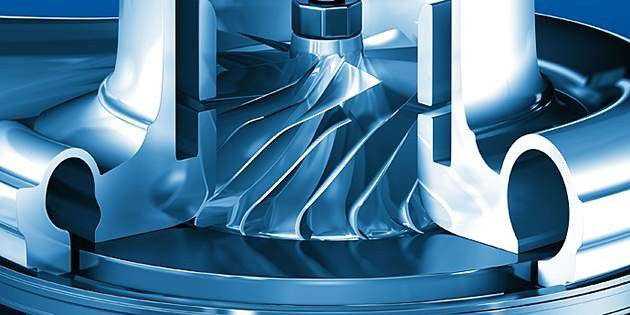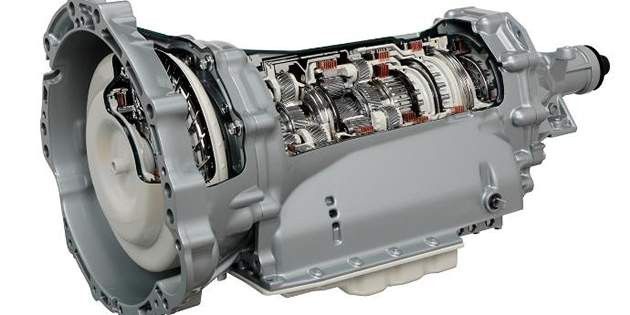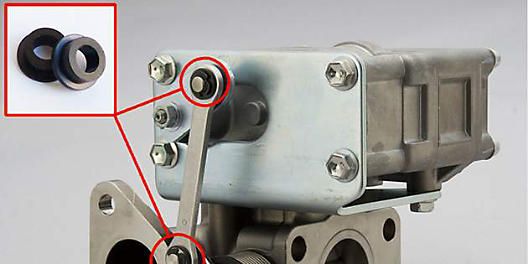High-Performance Materials for Turbochargers & Emissions Systems
Article
The biggest challenges facing the automotive industry are to increase fuel economy and lower emissions, without sacrificing power, all of which impacts materials for turbochargers and emissions systems. In spite of all the talk about electric drive systems, the industry will still rely on the internal combustion engine for the next 15–20 years while solving these challenges.
As a result, there will be significant growth in smaller internal combustion engines such as those below 2.5L. These smaller displacement engines will help deliver fuel economy and emission performance but will likely require some type of performance boost to provide the power output that customers demand. That boost will come from devices like turbochargers.
Materials for turbochargers and emissions systems must now withstand a much harsher operating environment caused by:
Higher temperatures (170 ºC to 230 ºC at peak)
Higher acidity of EGR (exhaust gas recirculation)
Increased pressure
Aggressive coolants
Wear
Wear and Friction in Turbochargers & Emissions Systems
Over the past few years DuPont has applied fundamental materials science to the challenges of moving parts in turbochargers and emission systems — parts with unique wear and friction requirements.
While there are many types of wear, DuPont defines wear as one object sliding against another. Wear is the ability — or inability — of the substrate to resist fracturing as it attempts to resist the movement of the other object.
By defining a set of critical material properties that impact wear at high temperatures, DuPont scientists have been able to demonstrate improvements in wear in the range of 60-70%.
For example, a plate on a disc system with a lubricant in between the rotating surfaces is commonly found in driveline applications, such as thrust washers and seal rings. By carefully optimizing material selection and design guidelines, while understanding the thermal needs of the system, we have been able to demonstrate 45 to 55% reduction in measured friction — a significant gain for rotating driveline components.
To achieve long life there should be little or no component wear. And for predictable response times, friction should remain constant over the life of the vehicle. When applied to downsized turbocharged engines with advanced emission control systems, the exposure conditions push the performance limits of conventional materials.
The DuPont™ Vespel® SCP resinous plastic product family is one of the results of DuPont’s study of friction and wear. Vespel® SCP material offers:
Up to 60-70% reduction in wear.
Longer life at higher temperatures and higher-pressure times and velocity limits.
A coefficient of thermal expansion close to that of aluminum.
Automakers have seen improved performance in EGR valves after evaluating Vespel® SCP materials in emission valve applications exposed to high levels of soot and coke particles, which also contributes to both wear problems and actuation speed problems, primarily due to the change in friction properties over time.
Turbocharger and Emission Control Devices
Vespel® has been successfully tested in applications such as control arm ends and linkage bushings, which are external to the turbocharger and exposed to the engine compartment environment. Engineers are also considering internal bearing components such as ball bearing retainers, shaft spacers and seals.
With the increased use of electronic controls, these components must operate at very fast actuating speeds. DuPont has demonstrated that, even after millions of cycles, Vespel® parts retain their smooth, consistent operation.
From “Art to Part”
DuPont offers deep, global technical support in elastomers, resins, and high-performance parts. DuPont materials and application development teams continue to find new ways to integrate elastomers and resins to help automakers reduce weight and cost without sacrificing performance. DuPont scientists are continuously inventing families of high-heat-resistant lightweight materials to help ensure automakers choose the most appropriate materials for turbochargers and emissions systems. DuPont works throughout the value chain both locally and globally to help automakers shorten the time from “art to part.”
Ideas & innovations
Powered by a broad product portfolio and state-of-the-art expertise, we help our partners meet the critical industry demands of the electrical and electronics market.
Featured resources
Literature
Vespel® Parts for E-Mobility Applications
Vespel® Parts for Internal Combustion Engine Applications
Case Studies
Vespel® CP-0664 Adds Life to V-Grooves
Vespel® Line Shaft Bearings for Pumps
Vespel® Brings High-Temperature Performance to Aircraft Bushings and Washers
Articles
Vespel® Supporting Sustainable Mobility
Vespel® Boost Efficiency & Reduce Fuel Consumption
Vespel® Powering Sustainable Mobility
Additional links


